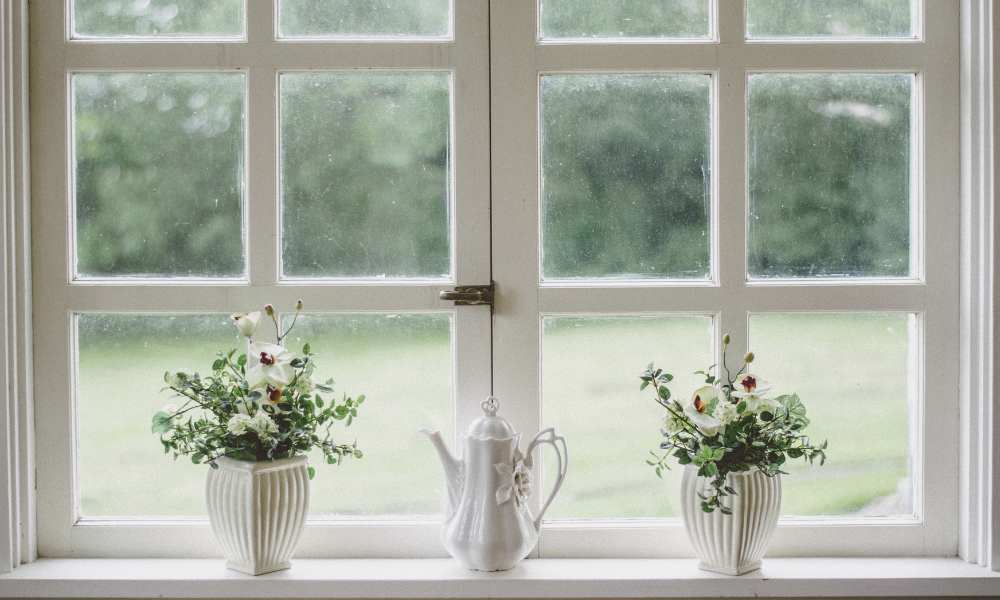When you’re faced with the decision of replacing your windows, the choice between vinyl and wood can feel overwhelming. Each material brings unique advantages to the table, from vinyl’s low maintenance and cost-effectiveness to wood’s classic appeal and durability. As you weigh your options, it’s crucial to consider not just immediate needs but also long-term value and environmental impact. So, which material aligns best with your priorities? The answer might surprise you as you explore the distinct benefits of each option.
Overview of Window Materials
When choosing new windows for your home, it’s essential to understand the different materials available, as each option offers distinct advantages and drawbacks.
Aluminum frames are known for their strength and durability, making them a popular choice in modern constructions. They resist warping and can withstand harsh weather conditions, but they may conduct heat and cold, impacting energy efficiency.
On the other hand, fiberglass options provide excellent insulation and energy efficiency, thanks to their low thermal conductivity. They can mimic the appearance of wood without the maintenance issues. However, they tend to be pricier than aluminum.
Ultimately, evaluating your budget, climate, and aesthetic preferences will help you decide which material best suits your needs.
Advantages of Vinyl Windows
Vinyl windows stand out as a popular choice among homeowners due to their impressive combination of affordability, low maintenance, and energy efficiency.
One of the key advantages is their exceptional energy efficiency, which helps keep your home comfortable year-round while reducing your energy bills. Vinyl windows often come with multi-chamber frames and insulated glass, enhancing thermal performance.
Additionally, they require minimal maintenance compared to other materials; a simple wash with soap and water is usually all you need. They won’t chip, peel, or require repainting, which saves you time and money.
Benefits of Wood Windows
Wood windows offer a timeless appeal and natural beauty that can enhance the aesthetic of any home. Their classic look adds character and warmth, making them a popular choice for homeowners seeking to boost their property’s charm.
Beyond aesthetics, wood windows boast excellent insulation properties. They effectively reduce heat transfer, keeping your home warm in winter and cool in summer, which can lead to energy savings. Additionally, wood acts as a natural insulator, minimizing noise pollution and creating a quieter indoor environment.
With proper maintenance, these windows can last for decades, providing long-term value. Ultimately, if you prioritize both beauty and functionality, wood windows could be the ideal choice for your home renovation project.
Cost Comparison
While both vinyl and wood windows serve the essential function of providing light and insulation, their costs can vary significantly based on materials, installation, and long-term maintenance.
Here’s a breakdown to help you understand the financial implications:
- Installation Costs: Vinyl windows typically have lower installation costs due to their lighter weight and simpler installation process.
- Material Costs: Wood windows are generally more expensive upfront since they require higher-quality materials.
- Maintenance Costs: Vinyl requires minimal maintenance, leading to potential long-term savings, while wood often needs regular upkeep.
- Resale Value: Wood windows may offer better resale value, which can offset initial costs over time.
Environmental Impact
When considering the environmental impact of window replacement materials, it’s essential to evaluate the sustainability of both vinyl and wood.
Wood windows often come from renewable resources, and responsible sourcing can enhance their eco-friendly appeal. However, the deforestation associated with wood production can be a concern if sustainability practices aren’t followed.
On the other hand, vinyl is made from PVC, which can be less sustainable due to its production process and reliance on fossil fuels. Nonetheless, vinyl windows boast better recycling options, as they can be repurposed at the end of their life cycle.
Ultimately, choosing between vinyl and wood involves weighing these factors and considering your commitment to environmental sustainability in your home improvement projects.
Why You Should Choose Pure Energy Window Company for Your Window Replacement Needs
When it comes to window replacement, Pure Energy Window Company stands out as the premier choice. With our commitment to quality, energy efficiency, and customer satisfaction, we provide top-notch window solutions tailored to your needs. Our expert team ensures a seamless installation process, enhancing your home’s comfort and aesthetics. Choosing Pure Energy Window Company means investing in durable, high-performance windows that reduce energy costs and improve your home’s value. Experience the difference of superior craftsmanship and personalized service in your window replacement journey. Trust us for all your window needs!
Conclusion
In the end, choosing between vinyl and wood windows boils down to your unique needs and preferences. If you crave low maintenance and energy efficiency, vinyl’s your champion. However, if you yearn for the timeless elegance of wood, it can add a touch of warmth to your home. Whichever you choose, remember that the right windows can transform your space into a sunlit sanctuary, enhancing both comfort and value for years to come.
Media Contact :
Pure Energy Window Company
42850 Schoenherr Rd Suite 7, Sterling Heights, MI 48313, United States
(586) 501-8222





